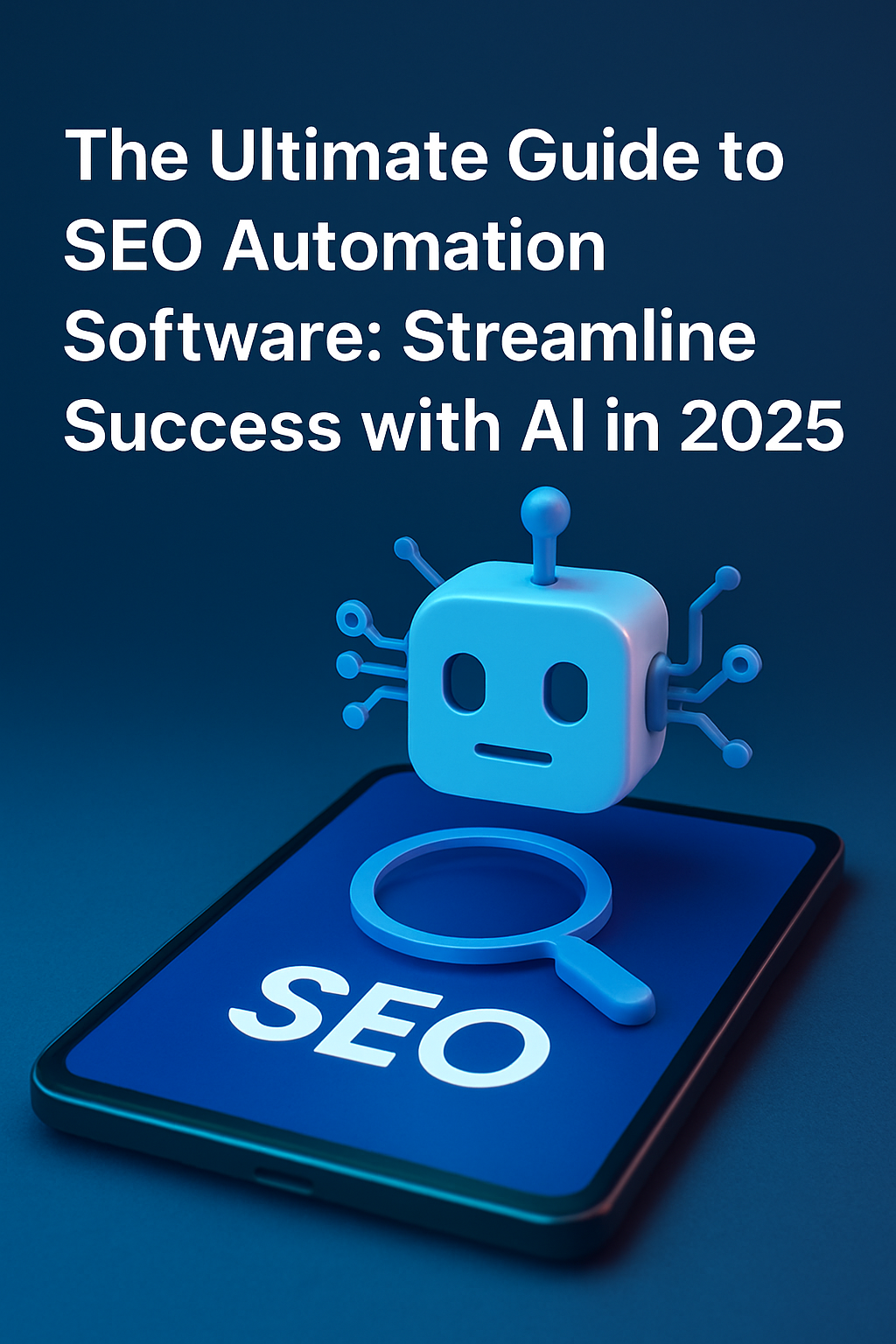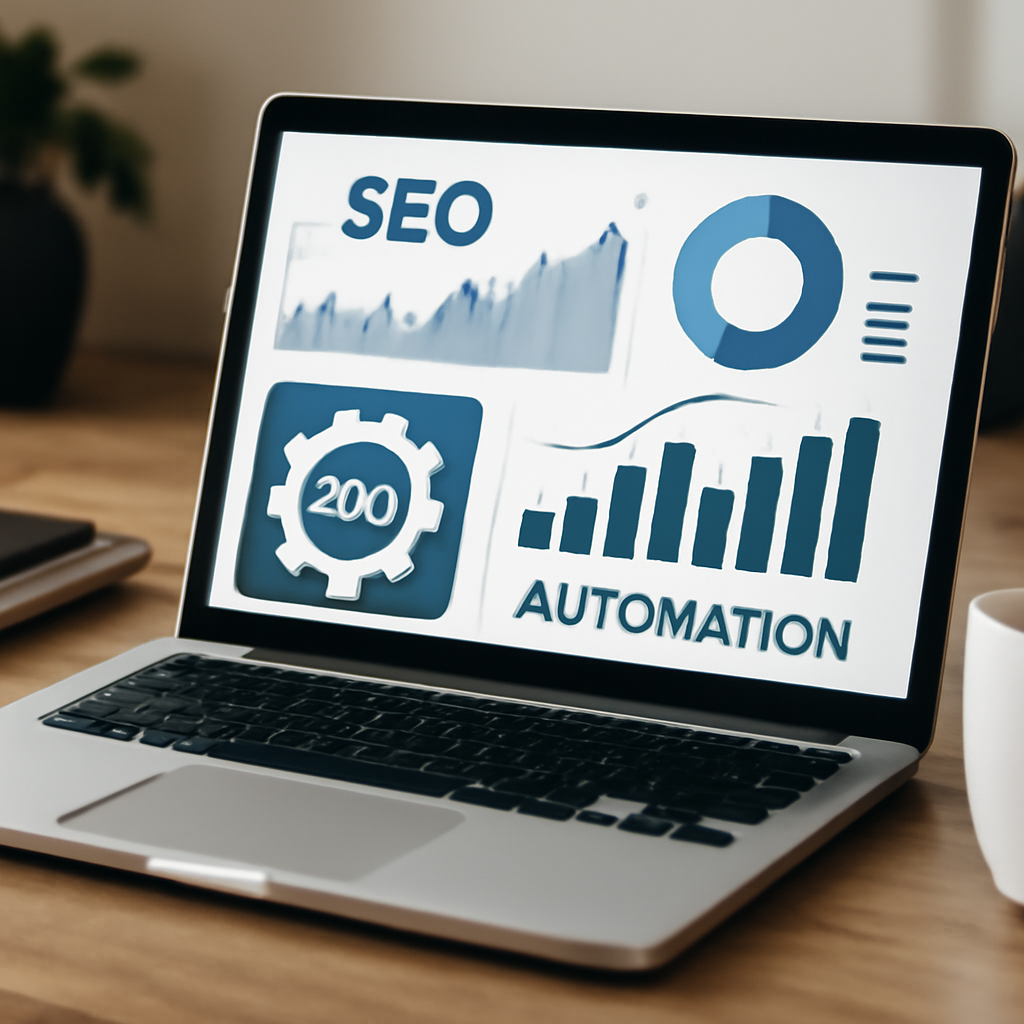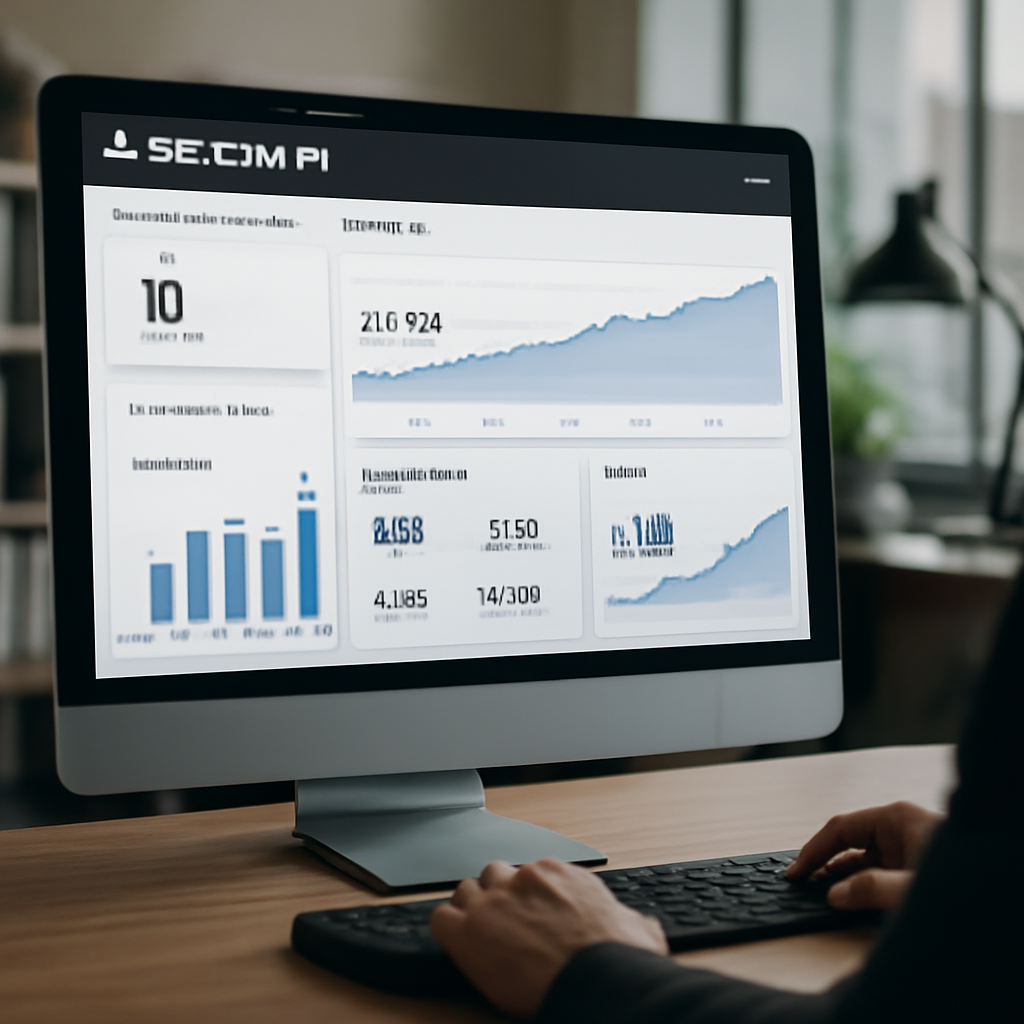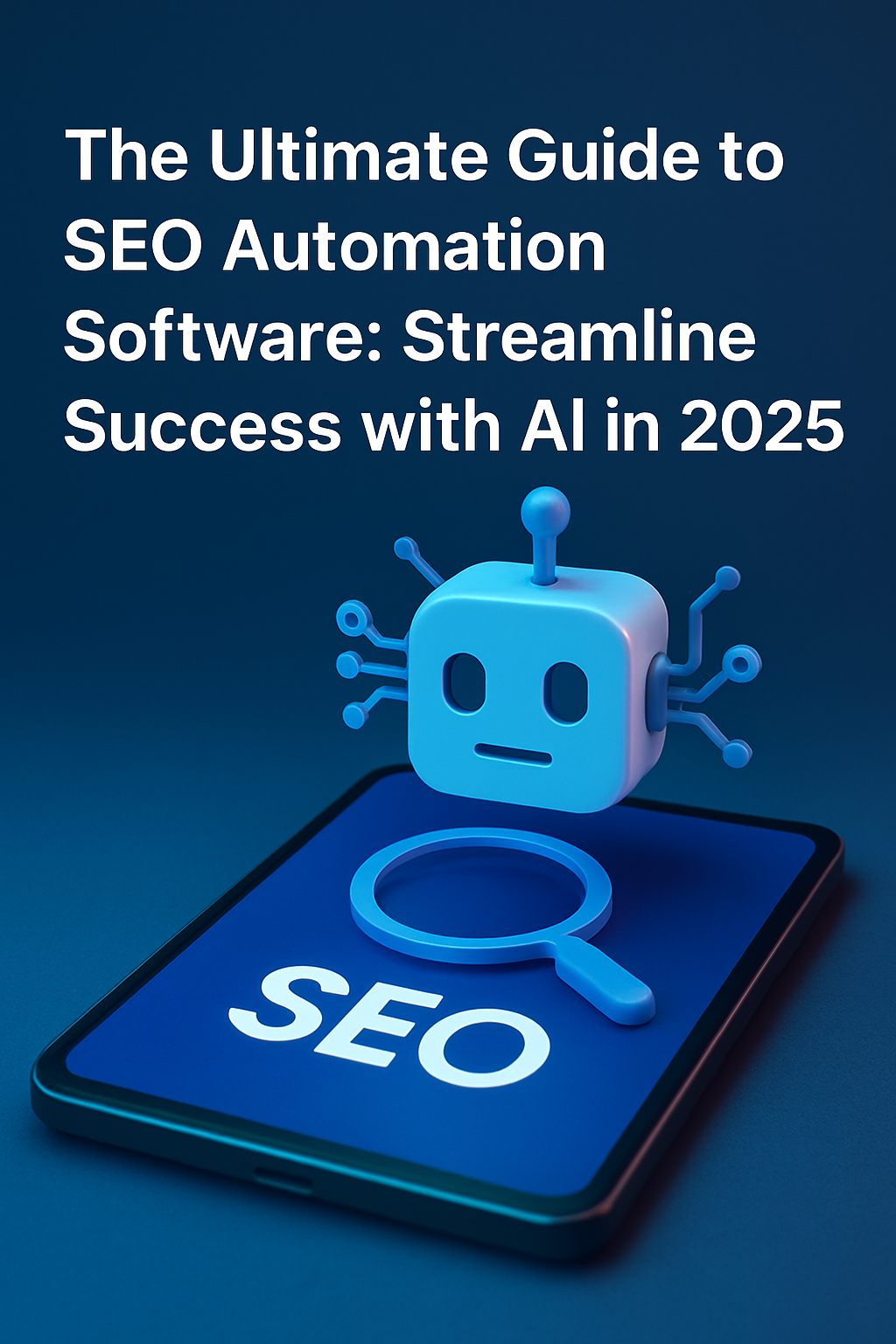Whether you lead a fast-scaling team or run a lean marketing operation, seo automation software [Search Engine Optimization automation software] can turn the daily grind into a measurable growth engine. The old playbook of manual audits, spreadsheet wrangling, and one-off content pushes does not keep pace with evolving Google, ChatGPT, and Gemini experiences that reward freshness, authority, and precise answers. Today, the winners automate repetitive tasks, feed structured context to large language models [LLM, Large Language Model], and publish consistently without sacrificing quality. In this guide, you will learn what to automate, how to evaluate platforms, and how SEOPro AI transforms workflows with proprietary prompt engineering, brand-aware optimization, and integrations with major CMS platforms and automated publishing that position your content for both traditional search engine results pages [SERP, Search Engine Results Page] and answer engines. Ready to reclaim hours and compound your returns, week after week?

What Is seo automation software?
At its core, seo automation software [Search Engine Optimization automation software] combines data ingestion, rules-based workflows, and artificial intelligence [AI, Artificial Intelligence] to handle high-frequency tasks that used to require constant human attention. Think of it as a co-pilot that crawls your site, monitors keyword movement, drafts briefs, suggests internal links, and pushes structured updates where they matter most, while you focus on strategy and editorial judgment. Modern platforms orchestrate a range of SEO tasks—from site health monitoring and on-page optimization to workflow automation for content production and backlink prospecting, using natural language processing [NLP, Natural Language Processing] to map intent and entities. The best systems also anticipate the rise of answer engine optimization [AEO, Answer Engine Optimization] by preparing your pages and content to be cited by conversational systems like ChatGPT [Chat Generative Pre-trained Transformer] and Gemini [Google’s multimodal large language model, Large Language Model].
Why Automation Matters in 2025: From Google to AI Answers
Search behavior is fragmenting across classic web search, AI overviews, and chat-style answers, and that diversity raises both the bar and the opportunity for marketers. Industry trackers estimate Google processes billions of searches per day, while AI assistants surface direct responses that skip the click when brands are not explicitly mentioned. Surveys in 2024 indicated a clear majority of marketing teams now use AI [Artificial Intelligence] in content or Search Engine Optimization [SEO, Search Engine Optimization] tasks, citing time savings and broader coverage of long-tail queries. That shift means your operations must scale intent coverage, structured data, and content refreshes without burning out your team, and automation is simply how you sustain that tempo with precision and accountability.
Watch This Helpful Video
To help you better understand seo automation software, we’ve included this informative video from Ahrefs. It provides valuable insights and visual demonstrations that complement the written content.
Automation also underpins consistency, which is the quiet superpower behind durable ranking gains and trustworthy brand signals. When your pages are re-crawled with fixed issues, your internal links are pruned and augmented, and your entity markup stays current, you steadily improve crawl efficiency and click-through rate [CTR, Click-Through Rate]. Paired with editorial guardrails, AI [Artificial Intelligence] can accelerate briefs, outlines, and on-page optimization, while automated reporting turns messy logs into readable performance stories tied to key performance indicators [KPI, Key Performance Indicator]. As answer engines evolve, systems that reinforce your brand as a relevant, reliable source will influence which snippets and summaries win visibility across devices and assistants, and that is a compounding advantage worth automating today.
Core Capabilities of SEO [Search Engine Optimization] Automation Platforms
Great automation platforms are not black boxes; they are orchestration layers that make your strategy executable at scale. First, technical health must be continuously monitored through scheduled crawls, structured data checks, and performance audits to keep pages indexable and fast. Next, content operations benefit from automated keyword clustering, intent mapping, outline generation, and internal linking recommendations that align with experience, expertise, authoritativeness, and trustworthiness [E-E-A-T, Experience, Expertise, Authoritativeness, Trustworthiness] while respecting your editorial standards. Finally, distribution and measurement tie everything together with programmatic publishing to your content management system [CMS, Content Management System], timely syndication, and automated rank and visibility tracking across both web and AI [Artificial Intelligence] search surfaces.
- Technical automation: site crawl, Core Web Vitals monitoring, XML sitemap [Extensible Markup Language sitemap] and robots updates, schema markup via JavaScript Object Notation for Linked Data [JSON-LD, JavaScript Object Notation for Linked Data].
- Content automation: keyword clustering, topical maps, briefs, entity enrichment, and content refresh queues.
- Authority automation: backlink prospecting, internal link graphs, indexing assistance, and disavow file prep.
- Answer engine optimization [AEO, Answer Engine Optimization]: structured FAQs [Frequently Asked Questions], concise summaries, and brand-aware summaries for LLMs [Large Language Models, Large Language Model].
- Analytics and reporting: automated dashboards, anomaly alerts, and goal tracking tied to return on investment [ROI, Return on Investment].
How to Evaluate seo automation software

The right platform should feel like an extension of your playbook, not a replacement for strategic thinking. Start by mapping your bottlenecks across technical, content, and authority, then score tools on coverage, accuracy, interoperability, and governance. Look for integrations with your CMS, analytics, and collaboration stack that streamline publishing and workflows through secure application programming interfaces [API, Application Programming Interface], because brittle integrations create hidden manual work. Ask how the system supports answer engine visibility, including entity markup, citation-friendly summaries, and brand-aware optimization in AI [Artificial Intelligence] outputs without resorting to spammy tactics. Finally, insist on explainability: you should see why a recommendation exists, how it changes the page, and what metric it aims to move, so you can tie actions to key performance indicators [KPI, Key Performance Indicator] and defend results to stakeholders.
| Capability | Manual Effort Without Automation | Automated via SEOPro AI | Primary Impacted KPI [Key Performance Indicator] |
|---|---|---|---|
| Technical Audits | Monthly crawls, ad hoc fixes, slow feedback loops | Scheduled crawls, prioritized fixes, indexability checks, change diffs | Index coverage, page speed, crawl efficiency |
| Keyword Research | Hours of export-cleanup-cluster iterations | Automated clustering, intent mapping, opportunity scoring | Qualified traffic, non-brand discovery |
| Content Production | Manual briefs, outlines, and formatting | AI-powered briefs, structured outlines, publishing to CMS [Content Management System] | Publish velocity, content quality signals |
| Internal Linking | Page-by-page analysis and edits | Graph-based suggestions, anchor text consistency | Session depth, topical authority |
| Answer Engine Visibility | Manual snippet tests, inconsistent structure | FAQ [Frequently Asked Questions] and summary patterns, brand-aware summaries | Snippet share, assistant citations |
| Reporting | Spreadsheet assembly and weekly screenshots | Live dashboards, anomaly alerts, executive summaries | Time saved, decision speed |
SEOPro AI: Purpose-Built for Google, ChatGPT, Gemini, and Beyond
SEOPro AI is designed to solve the reality that traditional Search Engine Optimization [SEO, Search Engine Optimization] and content marketing are time-consuming, fragmented, and often blind to emerging AI [Artificial Intelligence] search experiences. Its AI-powered blog writing and content creation generate on-brand drafts, topic outlines, and entity-enriched sections that align with experience, expertise, authoritativeness, and trustworthiness [E-E-A-T, Experience, Expertise, Authoritativeness, Trustworthiness] while giving editors final say. A proprietary prompt engineering system embeds structured guidance and brand cues in your content and metadata, helping large language models [LLM, Large Language Model] correctly reference your brand in AI answers without deception. Combined with CMS integrations and automated publishing, your articles, FAQs [Frequently Asked Questions], and product pages can be scheduled and syndicated to your CMS [Content Management System] and relevant endpoints with one streamlined workflow instead of five.
Beyond creation, SEOPro AI automates backlink building, indexing assistance, and AI-enhanced answer optimization to position your pages for both snippets and assistant citations. Automated keyword visibility and ranking monitoring track progress across Google web results, AI overviews, and conversational assistants like ChatGPT [Chat Generative Pre-trained Transformer] and Gemini [Google’s multimodal large language model, Large Language Model], surfacing anomalies you can address before they snowball. The result is a reliable pipeline: discover opportunities, create entity-rich content, distribute it efficiently, acquire authority, and measure impact in one command center. If you have ever wished your Search Engine Optimization [SEO, Search Engine Optimization] stack could operate like a well-run product team with playbooks, sprints, and retrospectives, this platform brings that operating system to life.
Implementation Roadmap: 30-60-90 Days to Momentum
A practical rollout avoids big-bang pressure and builds confidence through quick wins. In the first 30 days, connect your CMS [Content Management System], analytics, and Search Console equivalents, then run baseline crawls and keyword clustering to expose low-risk, high-impact fixes. Use AI [Artificial Intelligence]-generated briefs for three to five cornerstone topics and publish with structured data, internal links, and concise summaries designed for answer engines. Set up dashboards for visibility, rankings, and assisted citations so you can see progress in one place and agree on key performance indicators [KPI, Key Performance Indicator].
By day 60, expand into refreshes for decaying pages, launch an internal linking sprint guided by graph insights, and test brand-aware optimization on selected FAQs [Frequently Asked Questions] and how-to pieces. Introduce automated backlink prospecting with clear acceptance criteria focused on relevance and quality, not volume, and calibrate alerts for crawl errors and index coverage changes. At 90 days, move to a sustained cadence: weekly technical checks, biweekly content sprints, monthly authority pushes, and quarterly roadmap reviews tied to return on investment [ROI, Return on Investment]. This rhythm compounds, and your seo automation software [Search Engine Optimization automation software] becomes an engine that hums in the background while your team focuses on creativity and partnerships.
- 30 days: connect, baseline, quick wins, cornerstone content.
- 60 days: refreshes, internal linking sprint, brand-aware optimization.
- 90 days: authority building, performance reviews, roadmap iteration.
Best Practices and Guardrails for Sustainable Gains
Automation magnifies both strengths and weaknesses, so pairing it with clear standards keeps quality high. Define editorial principles that reflect experience, expertise, authoritativeness, and trustworthiness [E-E-A-T, Experience, Expertise, Authoritativeness, Trustworthiness], and ensure AI [Artificial Intelligence]-generated drafts are always reviewed by subject-matter experts before publication. Maintain a living schema strategy using JSON-LD [JavaScript Object Notation for Linked Data] for entities, FAQs [Frequently Asked Questions], and product types, and verify with testing tools before deployment. Create a change log and rollback plan so technical updates do not surprise your developers, and keep your governance transparent with who-approved-what trails that align with compliance needs. With these guardrails, you scale responsibly and keep a human hand on the wheel, even as the engine accelerates.
Measure what matters, not just what is easy. Track topic coverage, entity breadth, and assisted visibility in AI [Artificial Intelligence] answers alongside classic metrics like impressions, click-through rate [CTR, Click-Through Rate], and conversions, and compare cohorts before and after automation. Use anomaly detection to catch sudden ranking drops, indexation shifts, or traffic spikes that hint at technical issues or algorithmic changes, and investigate with structured playbooks rather than guesswork. Finally, keep learning loops short: run experiments on title formats, summary styles, or internal link anchors, and feed outcomes back into your rules so your system gets smarter. That evidence-based cadence is how you build moat-like advantages that last beyond any single tactic.
Real-World Examples: How Teams Use SEOPro AI Day to Day

A business-to-business blog team wanted to expand into five adjacent topics without diluting quality, and their bottleneck was briefs and outlines. Using SEOPro AI, they clustered thousands of queries into intent-led groups and produced editor-approved briefs with entity suggestions, statistics placeholders, and internal link targets in hours rather than weeks. Proprietary prompt engineering embedded in the content helped conversational systems understand the brand’s expertise and reference it appropriately when summarizing answers, supporting measurable lifts in assistant citations. Over the next quarter, their publish velocity doubled, pages per session increased, and they captured more featured snippets and AI [Artificial Intelligence] overview placements for non-brand terms.
An ecommerce team faced persistent indexation gaps, thin product descriptions, and slow updates across multiple stores and languages. The platform’s technical monitors flagged template-level issues, while AI [Artificial Intelligence]-powered content modules created differentiated descriptions and concise Q and A blocks aligned with answer engine optimization [AEO, Answer Engine Optimization]. The CMS integrations and automated publishing workflow pushed changes to their content management system [CMS, Content Management System] and localized versions simultaneously, and automated dashboards tied actions to revenue-focused key performance indicators [KPI, Key Performance Indicator]. With backlink building and indexing assistance running in the background, they saw faster time to index, stronger category visibility, and a steadier stream of long-tail conversions.
Feature Snapshot: What You Get with SEOPro AI
| Feature | What It Does | Why It Matters |
|---|---|---|
| AI-Powered Content Creation | Generates on-brand briefs, outlines, and drafts with entity enrichment | Accelerates production while preserving editorial quality and E-E-A-T [Experience, Expertise, Authoritativeness, Trustworthiness] |
| SEO Optimization for Google, ChatGPT, Gemini | Structures content for SERP [Search Engine Results Page] features and assistant answers | Expands visibility across web and conversational surfaces |
| Proprietary Prompt Engineering | Embeds structured guidance and brand cues in prompts and workflows | Improves assistant citations and brand recall |
| CMS Integration & Automated Publishing | Integrates with CMS [Content Management System] and channels for streamlined distribution | Reduces manual handoffs and errors |
| Backlink, Indexing, and Answer Optimization | Prospects links, supports indexing, and refines summaries and FAQs [Frequently Asked Questions] | Builds authority and snippet share |
| Automated Visibility Monitoring | Tracks rankings, AI [Artificial Intelligence] citations, and anomalies | Shortens time to insight and action |
Your Next Steps: From Strategy to System
Turn your goals into a living operating system by pairing clear strategy with repeatable processes. Document your themes and personas, choose a cadence for cornerstone and support content, and define acceptance criteria for quality so automation knows your standards. Map your workflows in a simple diagram—crawl to brief, draft to edit, publish to promote, measure to iterate—and assign owners so handoffs are automatic. Then pilot with one product line or topic cluster to validate impact, refine prompts and rules, and only then expand; this is how teams evolve from sporadic wins to reliable growth with seo automation software [Search Engine Optimization automation software].
Picture this diagram in your mind’s eye: a circular loop with four quadrants—Discover, Create, Distribute, Measure—each connected by arrows, and a smaller inner loop labeled Improve. At every transition, an automation icon indicates a rule or prompt running, while a human icon marks review points. That is the shape of a resilient Search Engine Optimization [SEO, Search Engine Optimization] system in 2025.
Final Thoughts
Automation turns fragmented Search Engine Optimization [SEO, Search Engine Optimization] chores into a cohesive growth loop you can run at scale and improve with data. In the next 12 months, brands that combine structured content, brand-safe prompts, and disciplined publishing will dominate both classic results and conversational answers. What will your operating system look like when your team’s creativity meets the steady cadence of seo automation software [Search Engine Optimization automation software]?
Additional Resources
Explore these authoritative resources to dive deeper into seo automation software.
Elevate SEOPro AI for Smarter Automation
Boost results with SEO optimization for Google, ChatGPT, Gemini, and other search platforms, while automating creation, distribution, and brand-aware optimization to drive measurable growth.

Leave a Reply